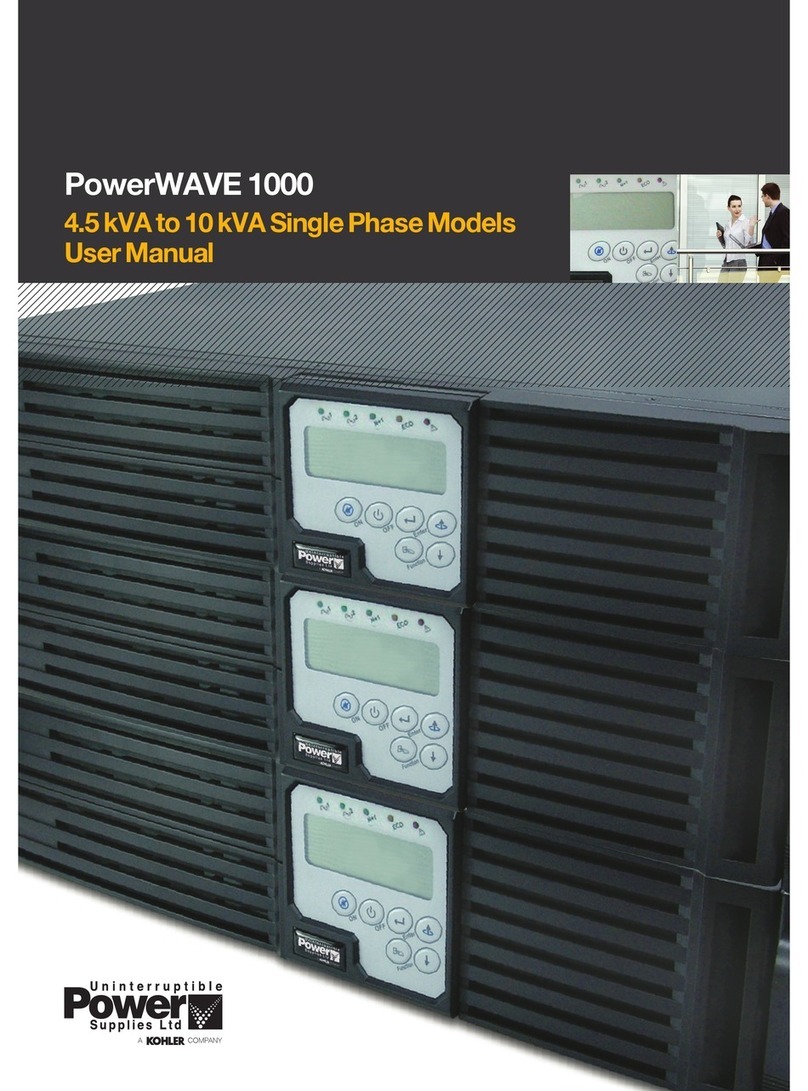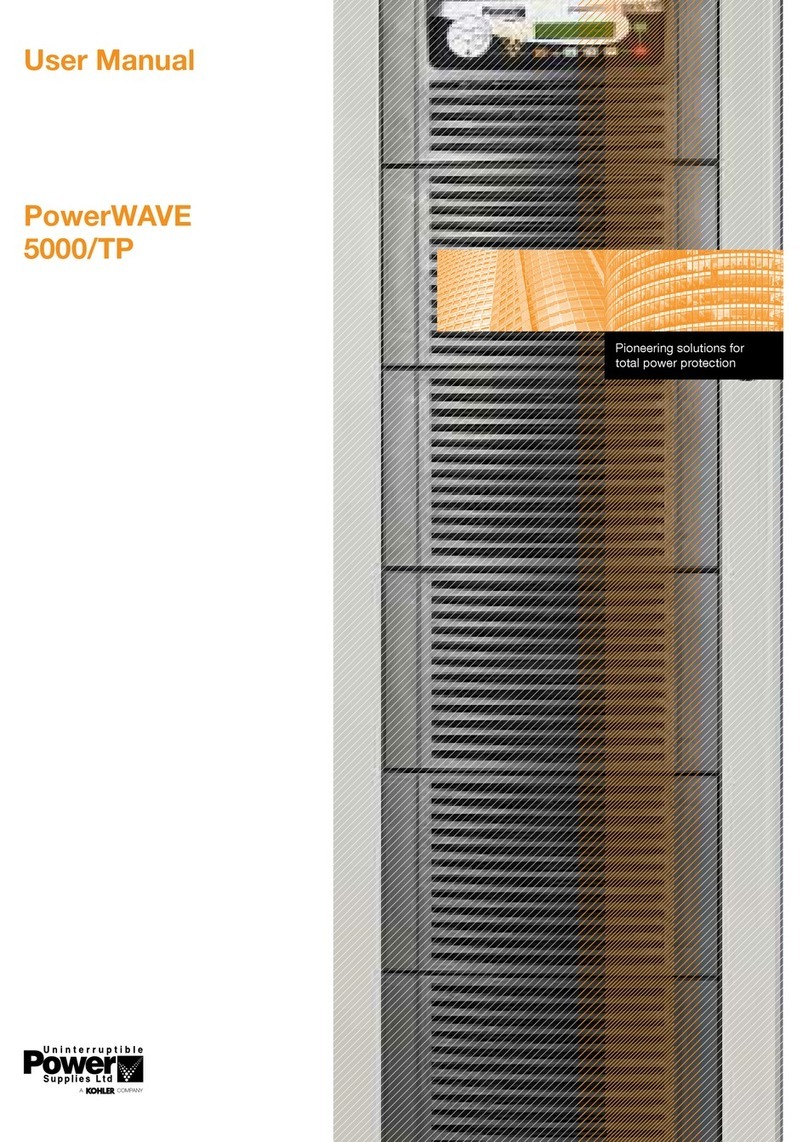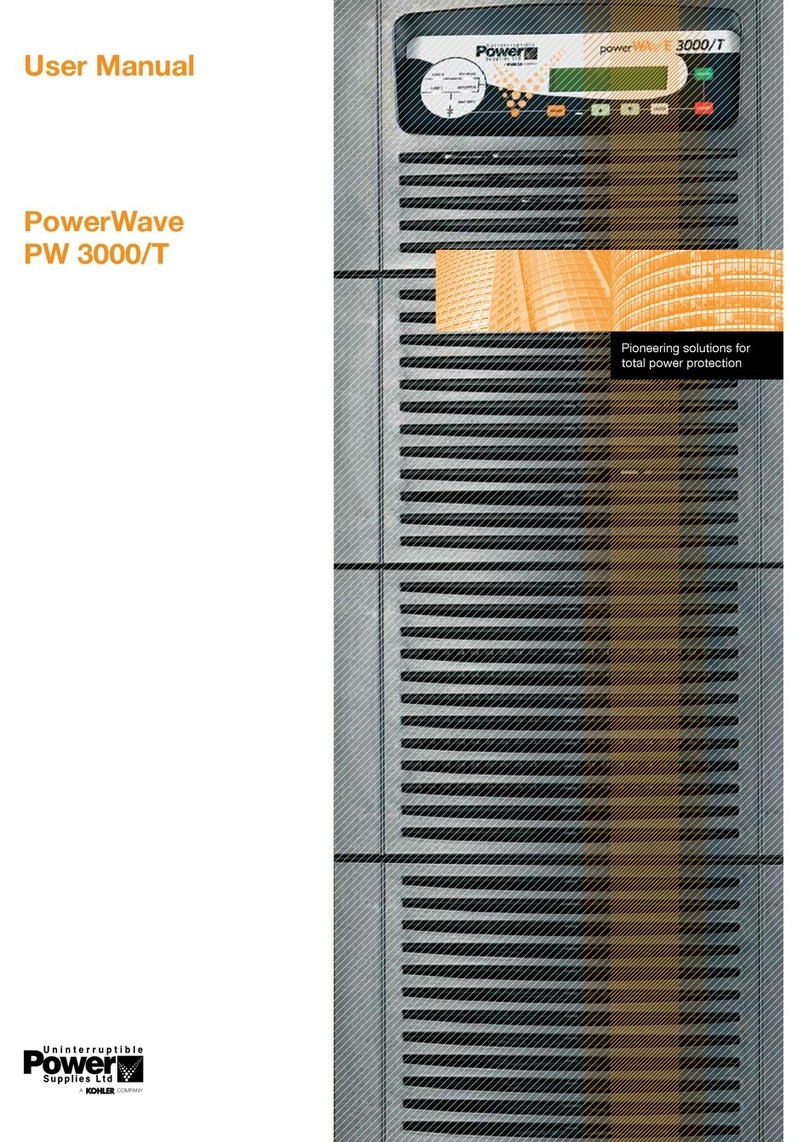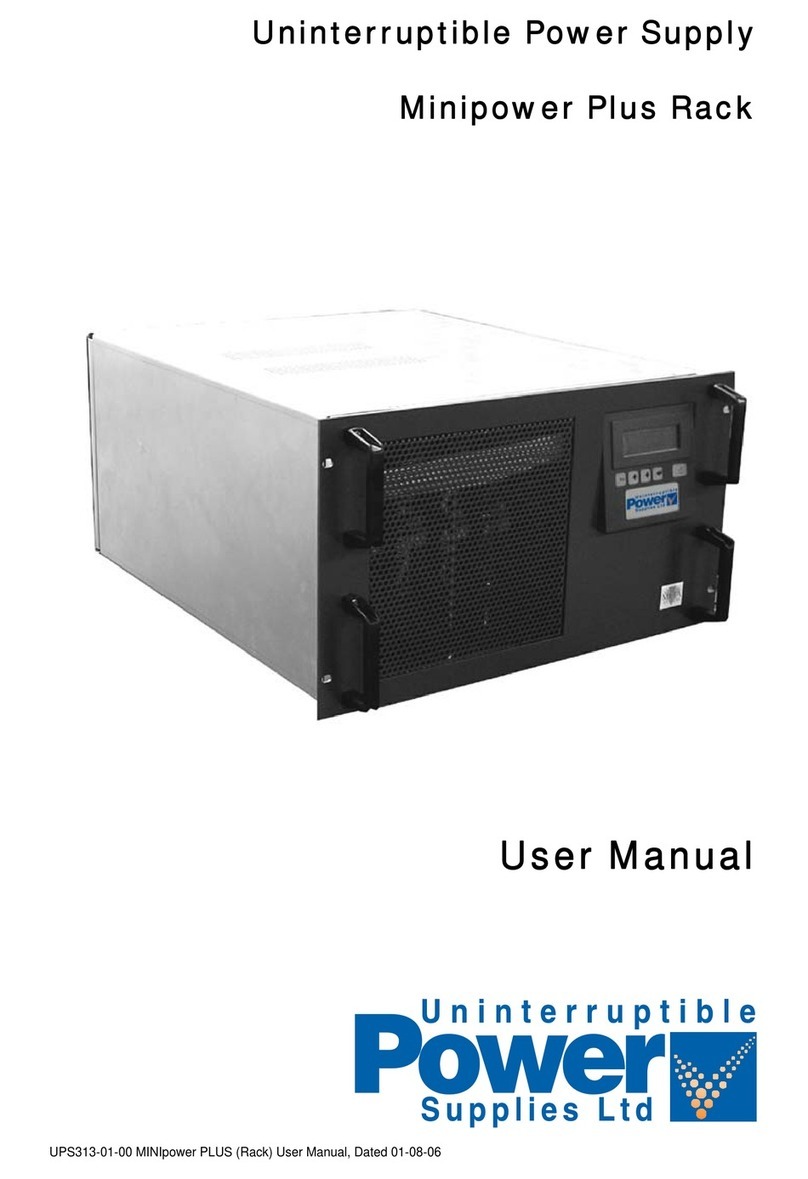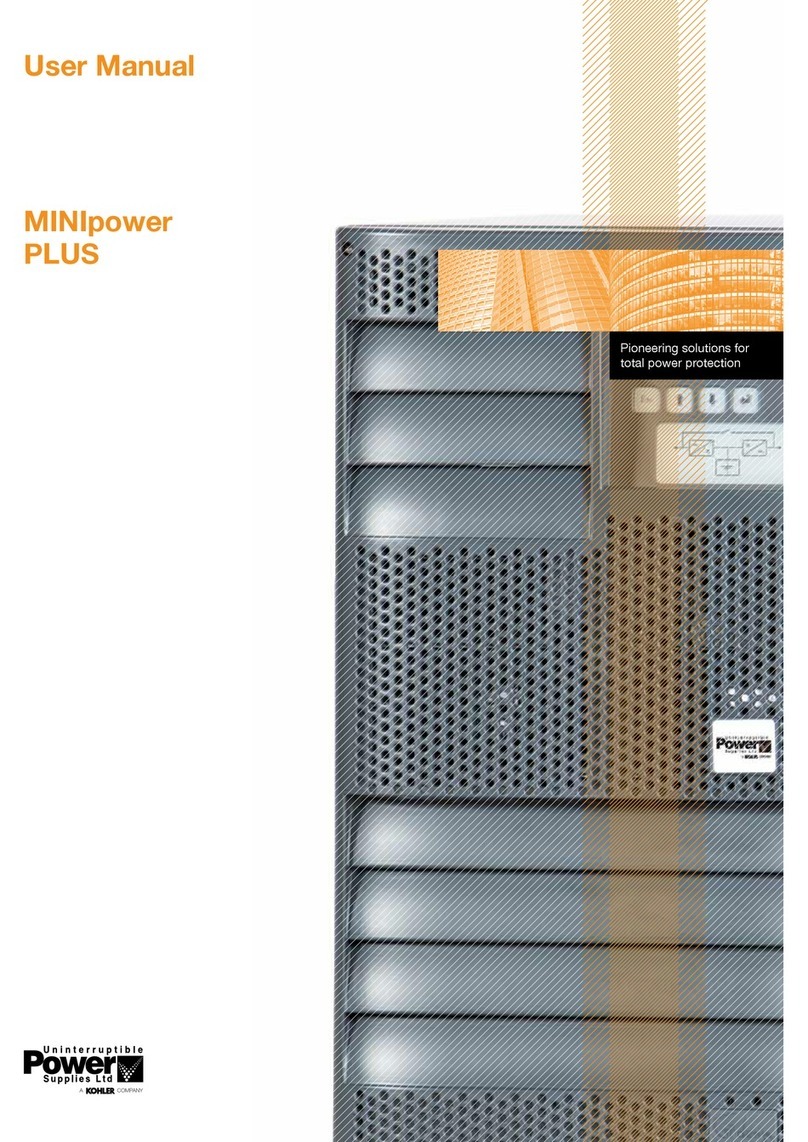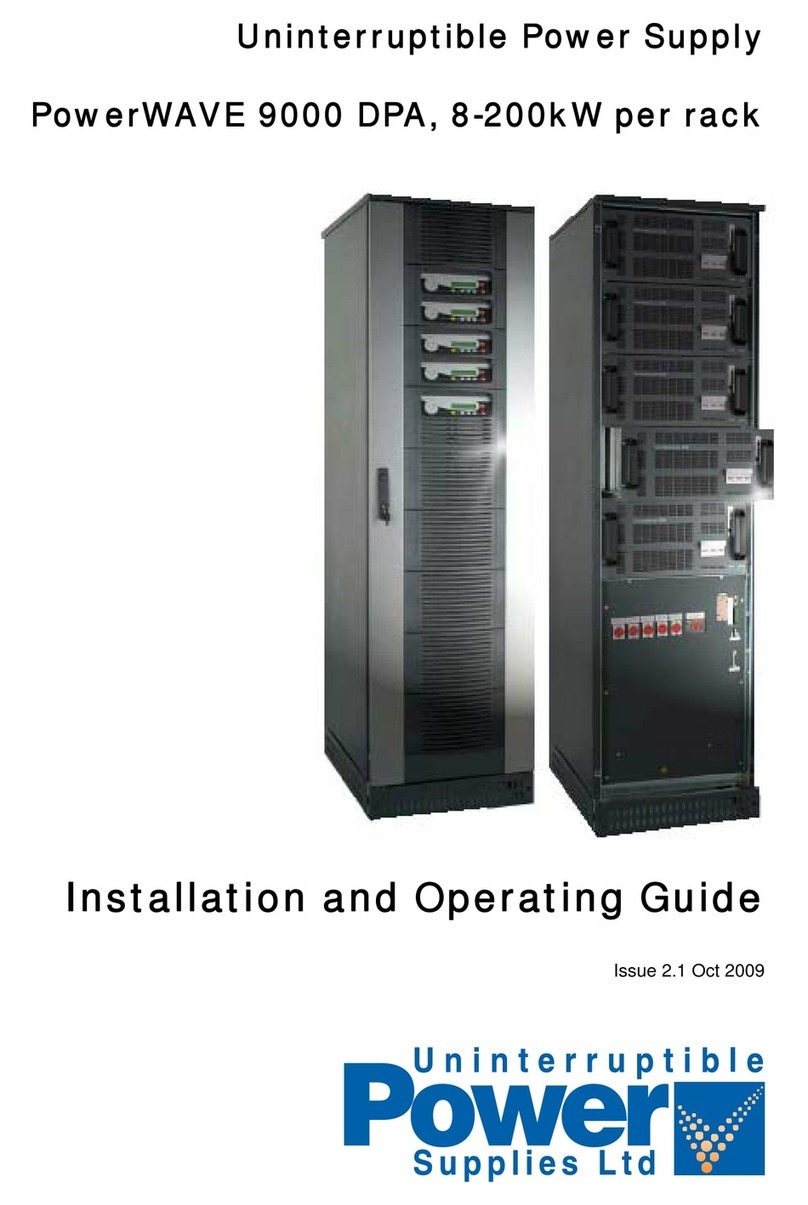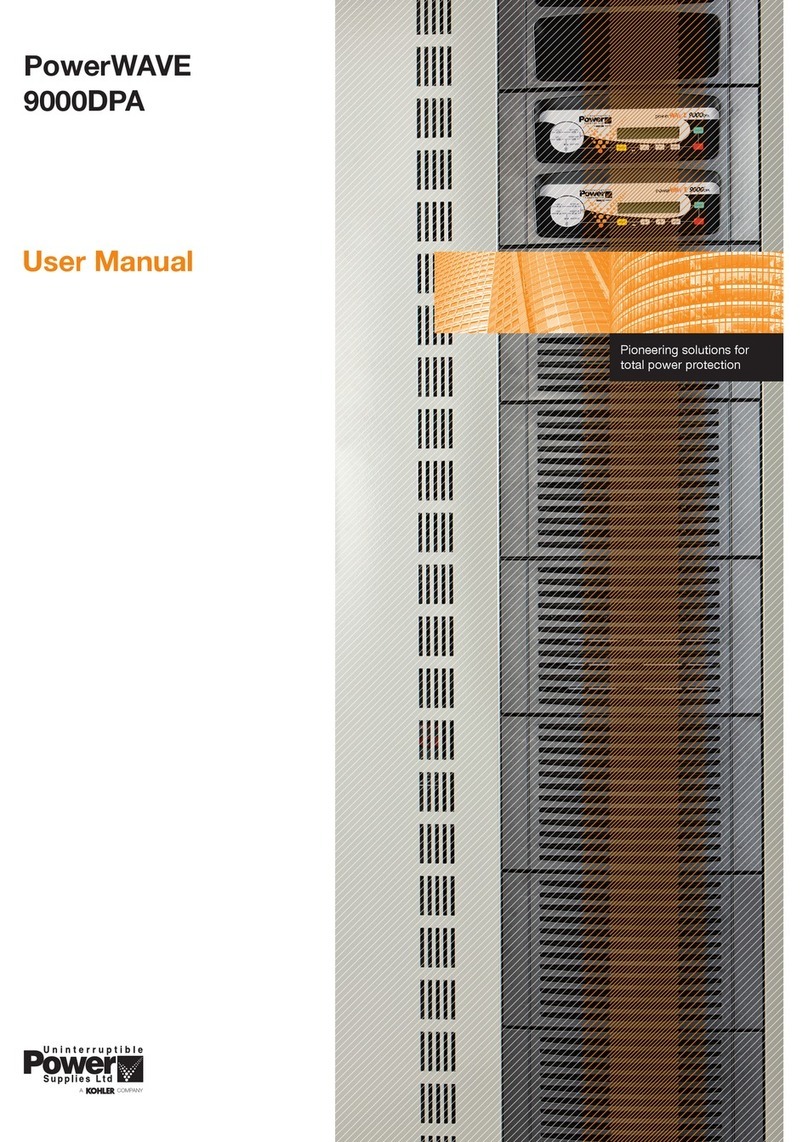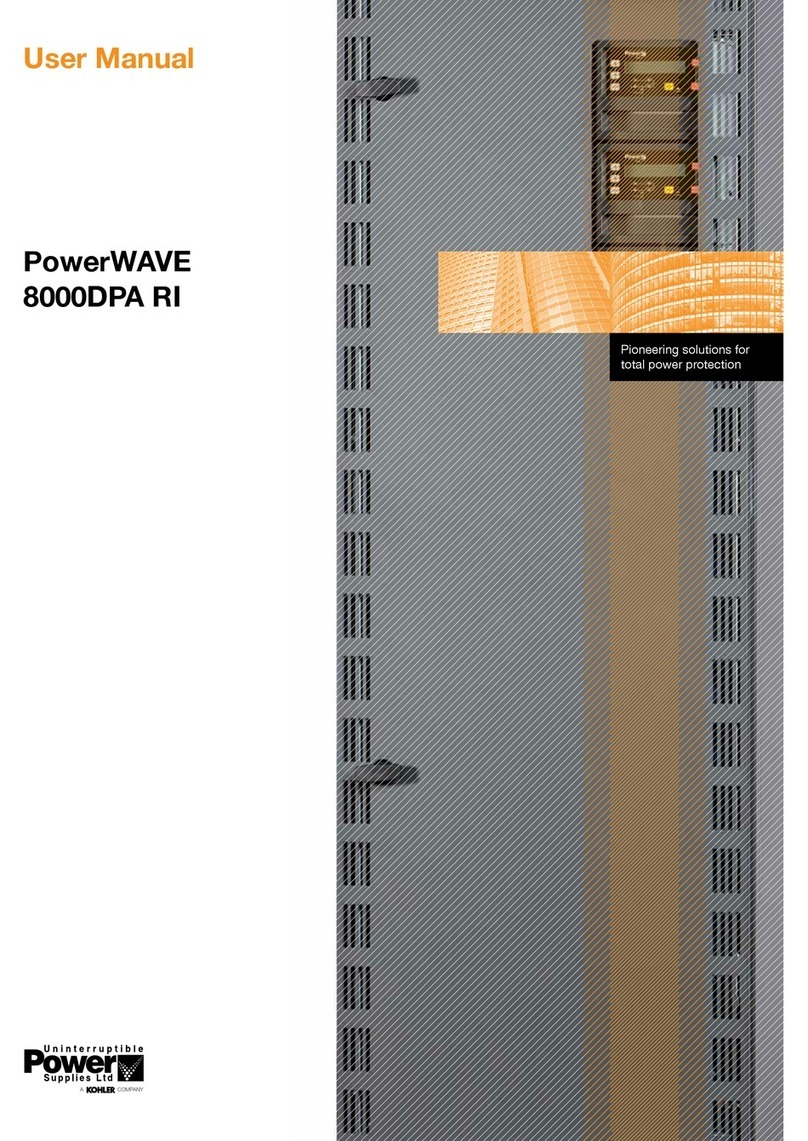II TS_604_01 PowerWave PW3000/TP User Manual UK 5/1/18
3.7 Connecting the UPS power cables 29
3.7.1 Power cabling procedure 29
3.7.2 Three phase dual input cabling details 30
3.7.3 Three phase single input cabling details 31
3.7.4 Single phase dual input cabling details 32
3.7.5 Single phase single input cabling details 33
3.8 Battery cabling procedure 34
3.8.1 Internal battery connections 34
3.8.2 External battery cabinet cabling procedure 35
3.9 Multi-cabinet configuration and paralleling cables 35
3.10 Optional remote monitoring and control facilities 35
Operating procedures 36
4.1 Introduction 36
4.1.1 Operating procedure summary 36
4.2 Single module start-up – with mains supply 37
4.3 Single module start-up – without mains supply 37
4.4 Single module – changing the operating mode 38
4.5 Single module shut down – with mains supply present 38
4.6 Single module shutdown – with UPS on battery 38
4.7 Single module – using the internal maintenance bypass 39
4.8 Parallel module system procedures 40
4.9 Parallel system start-up 41
4.10 Parallel system – changing the operating mode 41
4.11 Parallel system – start/stop one module 42
4.12 Parallel module complete system shut-down 43
4.13 External Maintenance Bypass operation 44
4.14 Operating a frequency changing system 45
4.14.1 Frequency changer – starting the UPS 45
4.14.2 Frequency changer – stopping the UPS 45
4.15 Emergency Stop 46
Maintenance 47
5.1 Introduction 47
5.2 System calibration 47
5.3 User responsibilities 47
5.4 Routine maintenance 47
5.5 Battery testing 48
5.6 Battery maintenance 48
5.7 Battery disposal and recycling 48
Troubleshooting 49
6.1 Contacting Service 49
6.2 Fault identification and rectification 50
6.2.1 Troubleshooting without an error message 50
6.2.2 Troubleshooting based on error message 50
Options 52
7.1 Back-feed protection 52
7.2 Emergency Power-OFF (EPO) 53
7.3 Computer communication options. 53
7.3.1 USB Port 53
7.3.2 RS232 Port.RS232 and USB Communication options 54
7.4 Serial Network Management (SNMP) card 54
